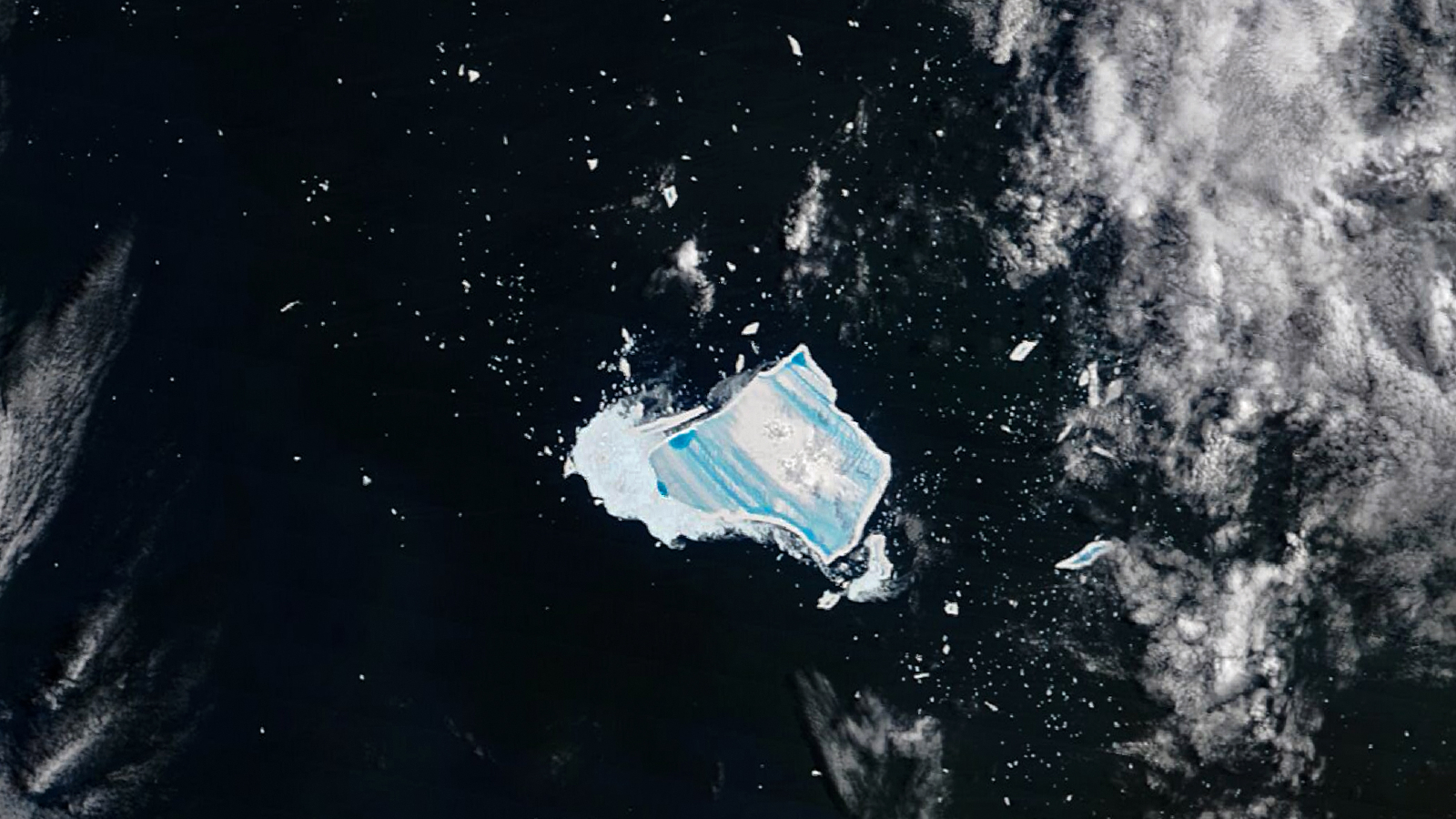Orcas: Facts about killer whales
Discover interesting facts about orcas, the deadly and beautiful predators that lurk in every ocean.

How big they are: Up to 32 feet (9.8 meters) long
How long they live: Up to 100 years, but usually around 25 to 50 years
What they eat: Fish, seals, seabirds, squid, sharks, and even whales
Orcas are often called killer whales, even though they almost never attack humans. They live in every ocean around the world, from the warm waters near the equator to the icy depths around the North and South poles. Orcas are among the most widely distributed mammals on the planet. They are incredibly social, diverse and ferocious marine predators, and they eat everything from penguins to great white sharks.
5 fast facts about orcas
- Orcas make clicking sounds and then listen to their echoes to find prey. This is called echolocation.
- Orcas' black-and-white coloring helps camouflage them by hiding their outline in the water.
- Orcas are social creatures and go through "fads," just like humans do. Killer whales near Washington, for instance, started wearing dead salmon on their heads as "hats." No one knows why.
- Orcas hunt in packs and can take down blue whales and great white sharks.
- Killer whales sometimes play "ball" with baby porpoises. They may do this for fun or to practice hunting.
Everything you need to know about orcas
Why are orcas called killer whales?
Orcas were originally called "whale killers" because ancient sailors saw them hunting in groups to take down large whales. Over time, that name morphed into "killer whales."
Killer whales are apex predators, which means they're at the top of the food chain and no animals (other than humans) hunt them. Killer whales eat many different types of prey, including fish, seals, seabirds and squid. They also take down whales larger than themselves, such as minke whales, and they are the only animal known to hunt great white sharks. They've even been spotted teaming up to kill blue whales, the biggest creatures on Earth.
Scientists don't know whether orcas kill for fun. The marine mammals do some things, like killing and tossing dead porpoises in the air, that raise that question. But while playing catch with a dead porpoise could be a form of play, it could also be hunting practice.
How big are orcas?
Orcas are the largest members of the dolphin family. Males are bigger than females, but they both vary in size and weight. The largest orca ever recorded was a staggering 32 feet (9.8 meters) long and weighed 22,000 lbs. (10,000 kilograms). That's longer and heavier than most RVs.
An orca's body has a special pointy shape that helps it move quickly and efficiently through the water. This shape, along with the orca's large size and strength, makes it one of the fastest marine mammals. It can reach speeds of 35 mph (56 km/h) — faster than Usain Bolt's Olympic sprinting record. Orcas also have massive teeth, which can grow up to 4 inches (10 centimeters) long.
Do orcas attack humans?
There is no record of an orca ever killing a human in the wild. One of the few documented near-attacks — an orca charging at a surfer in Norway before pulling away — most likely happened because the animal mistook the surfer for a seal.
Although wild killer whales do not intentionally harm people, they have attacked boats. In the summer of 2020, orcas rammed into and damaged sailing boats near Spain and Portugal. Three young male orcas were behind most of the attacks, and biologists think the young males were playing with the boats.
Orcas in captivity sometimes attack humans. Captive killer whales have been linked to four human deaths and many other violent incidents. For instance, a SeaWorld orca named "Tilikum" was involved in three human deaths. Marine biologists don't know why captive orcas are more violent, but stress likely plays a role.
What are orca pods?
Orcas are very social creatures and live in family groups called pods, which generally have five to 30 members. These pods are made up of related mothers and their descendants. Male orcas stay with their moms for life, while daughters may spend time away after having calves of their own. Pods often use their unique calls to communicate, but they can meet with other pods and sometimes come together to form even larger groups of over 100 orcas.
A female killer whale gives birth to one calf at a time every three to 10 years. Orcas work together to take care of the young.
Female killer whales live to be around 50 years old, but some orcas have lived up to 100 years. Males live shorter lives, usually dying by age 29. The oldest male orcas reach just 60 years.
Orca anatomy
Orca pictures
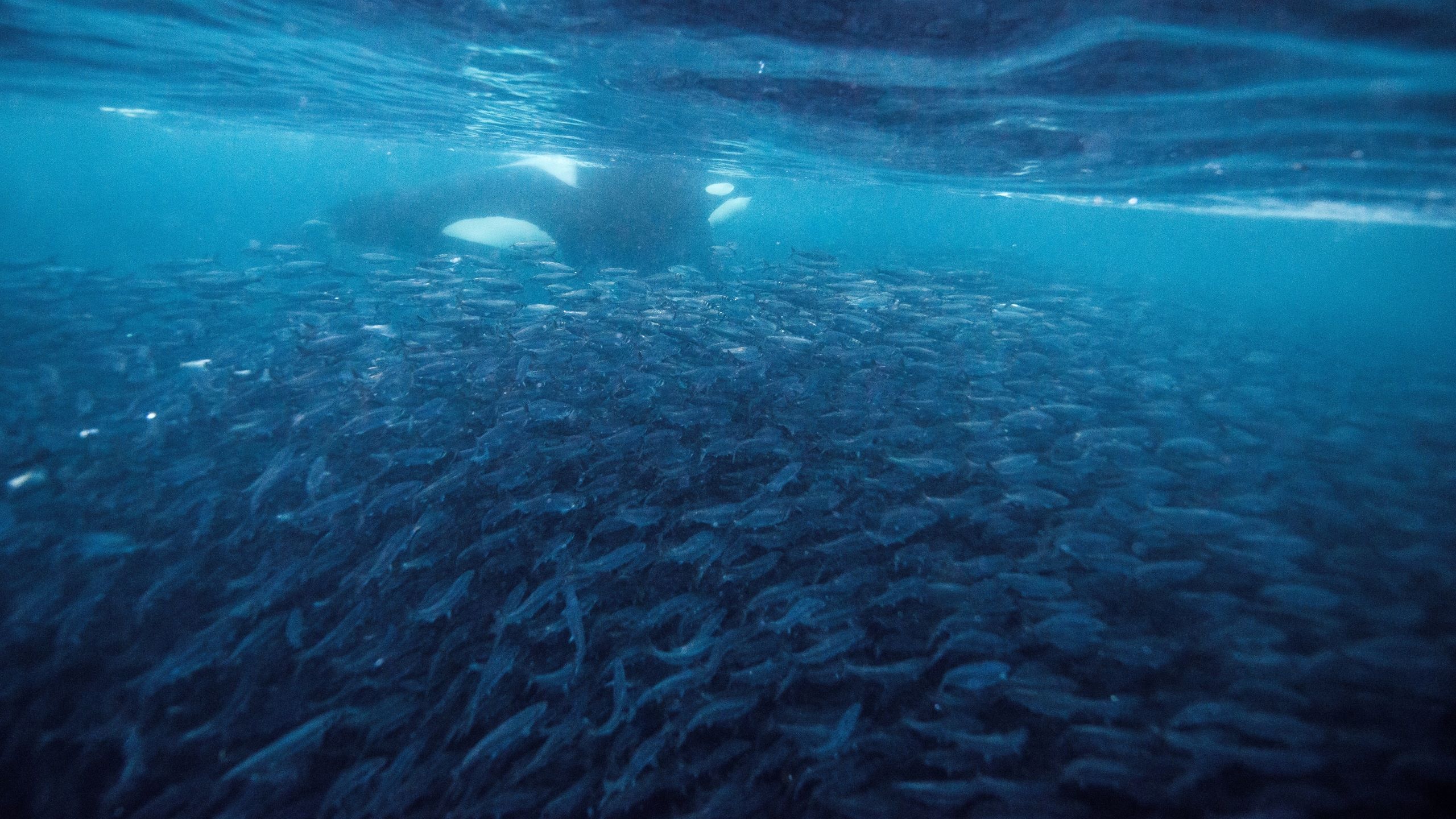
An orca traps a large group of herring in shallow waters near Norway.
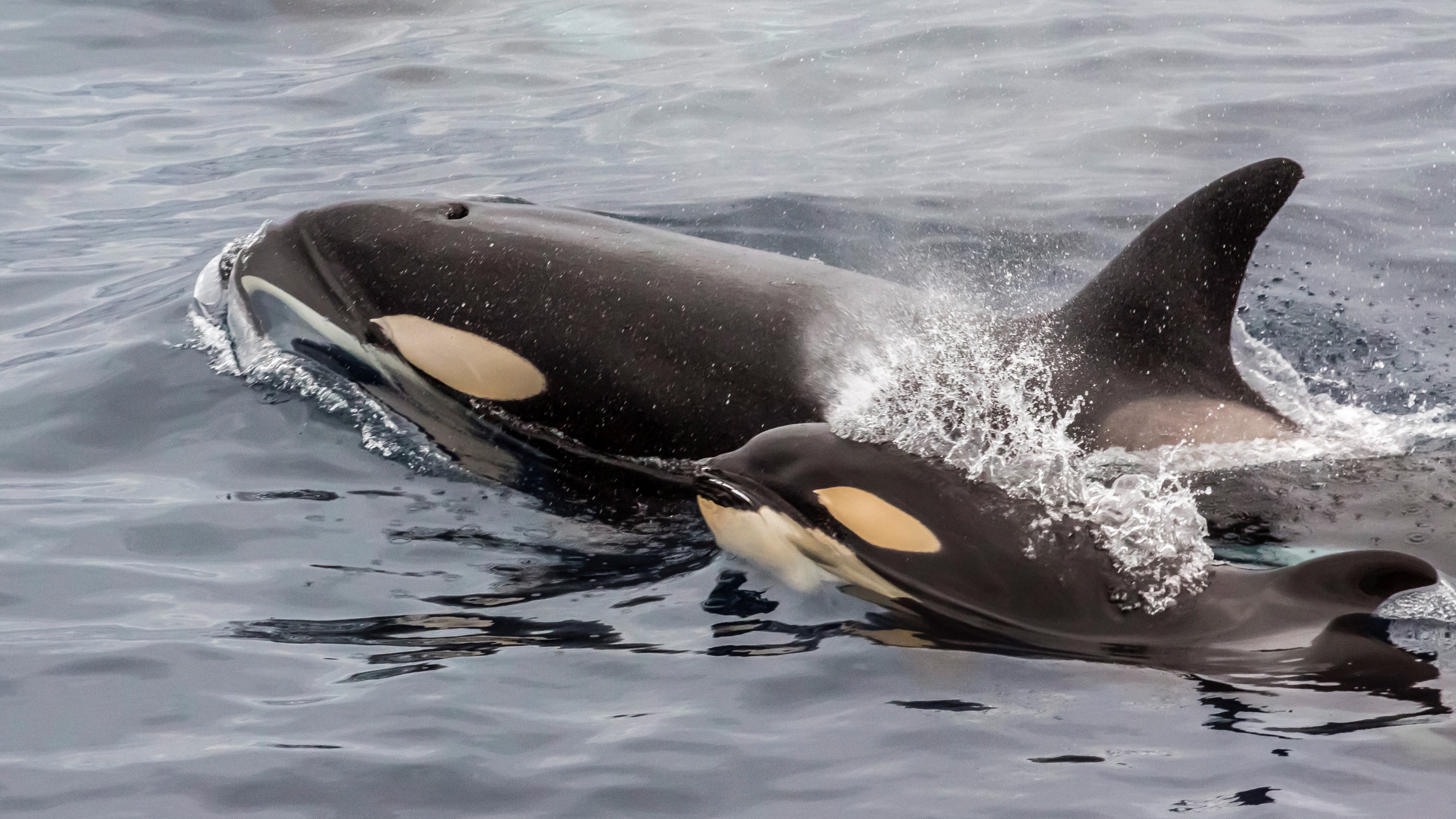
An adult killer whale and calf surface off the Cumberland Peninsula in Canada.
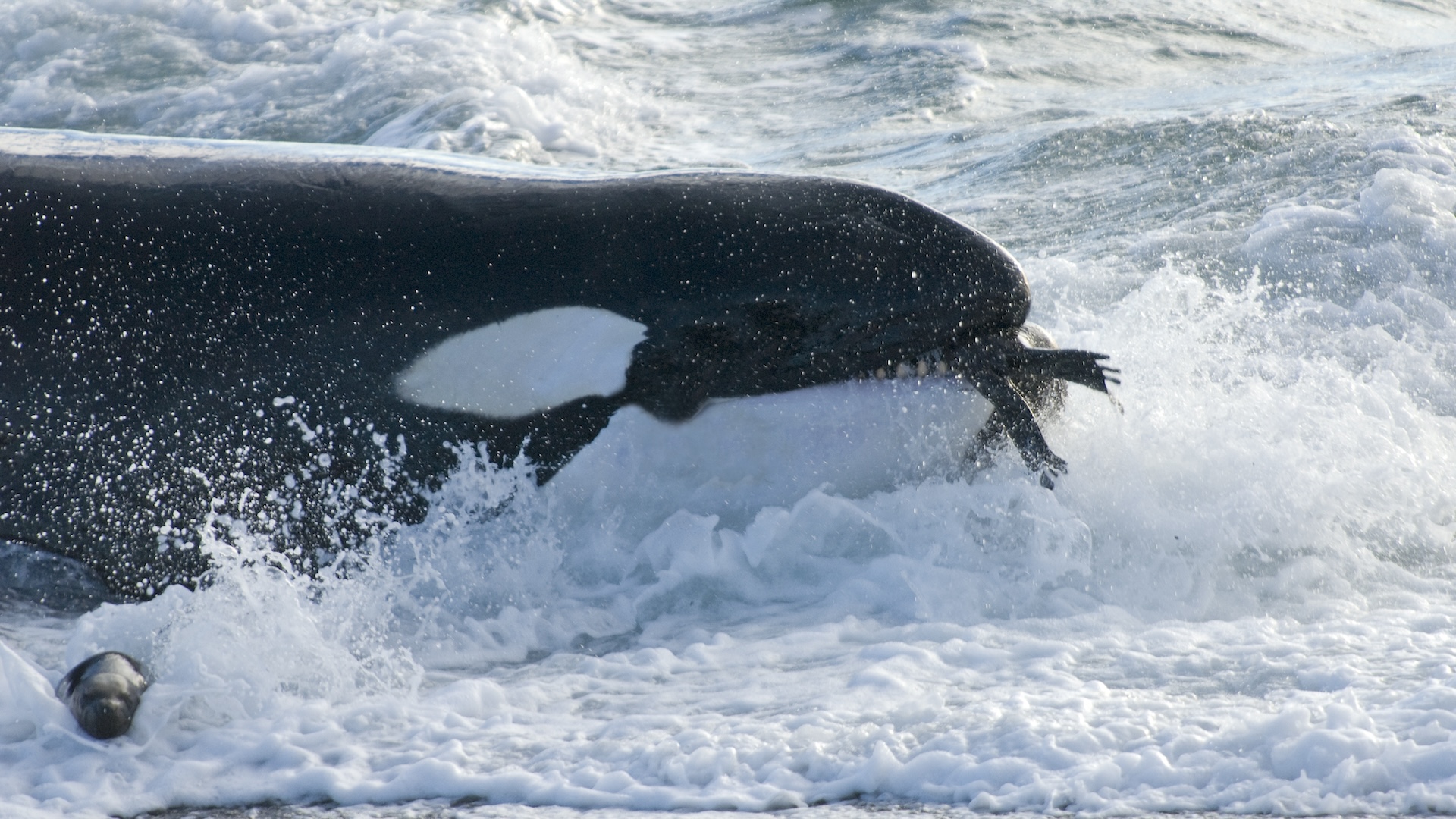
An orca hunts a sea lion.
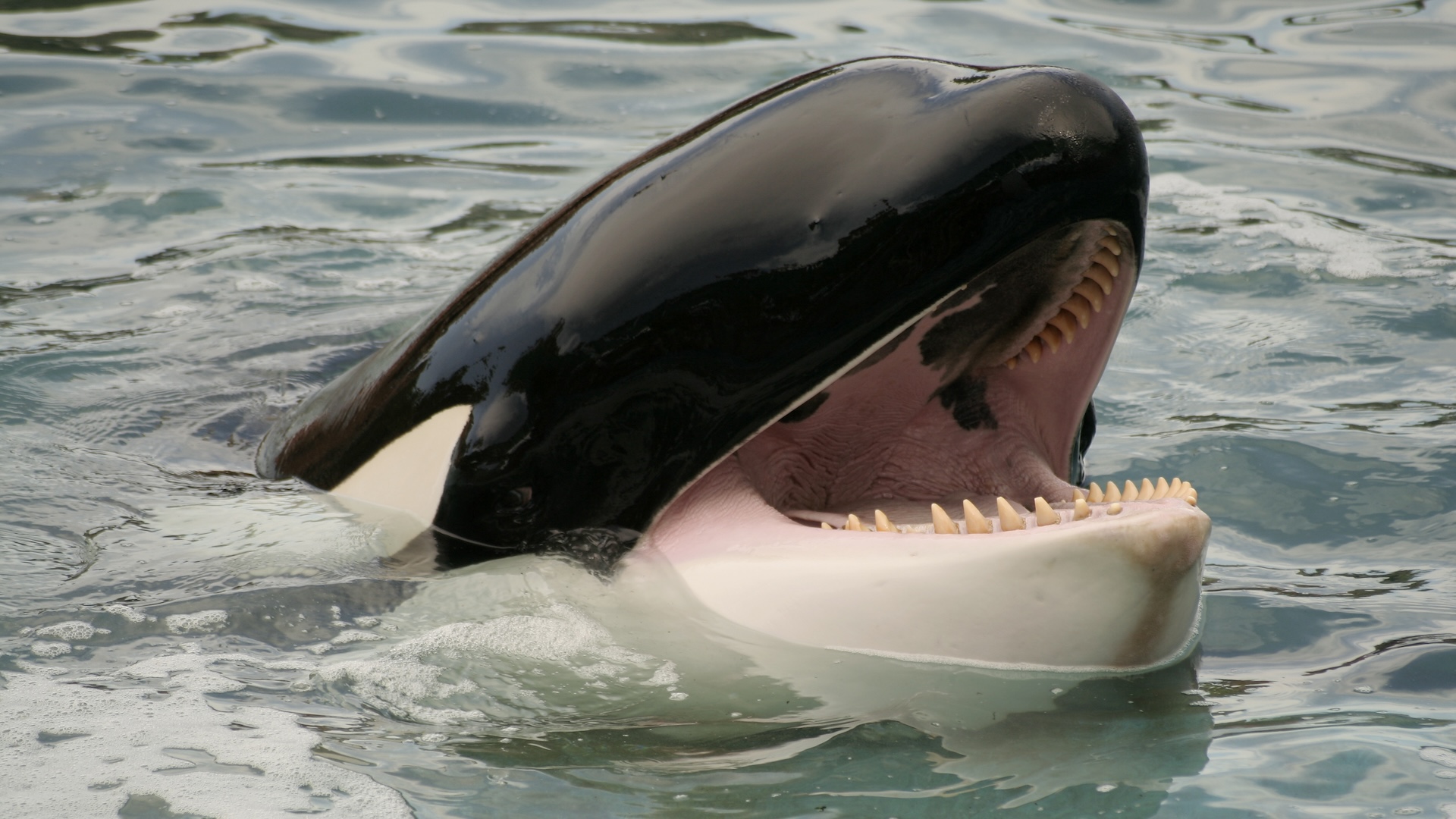
Orca teeth can grow up to 4 inches (10 cm) long.
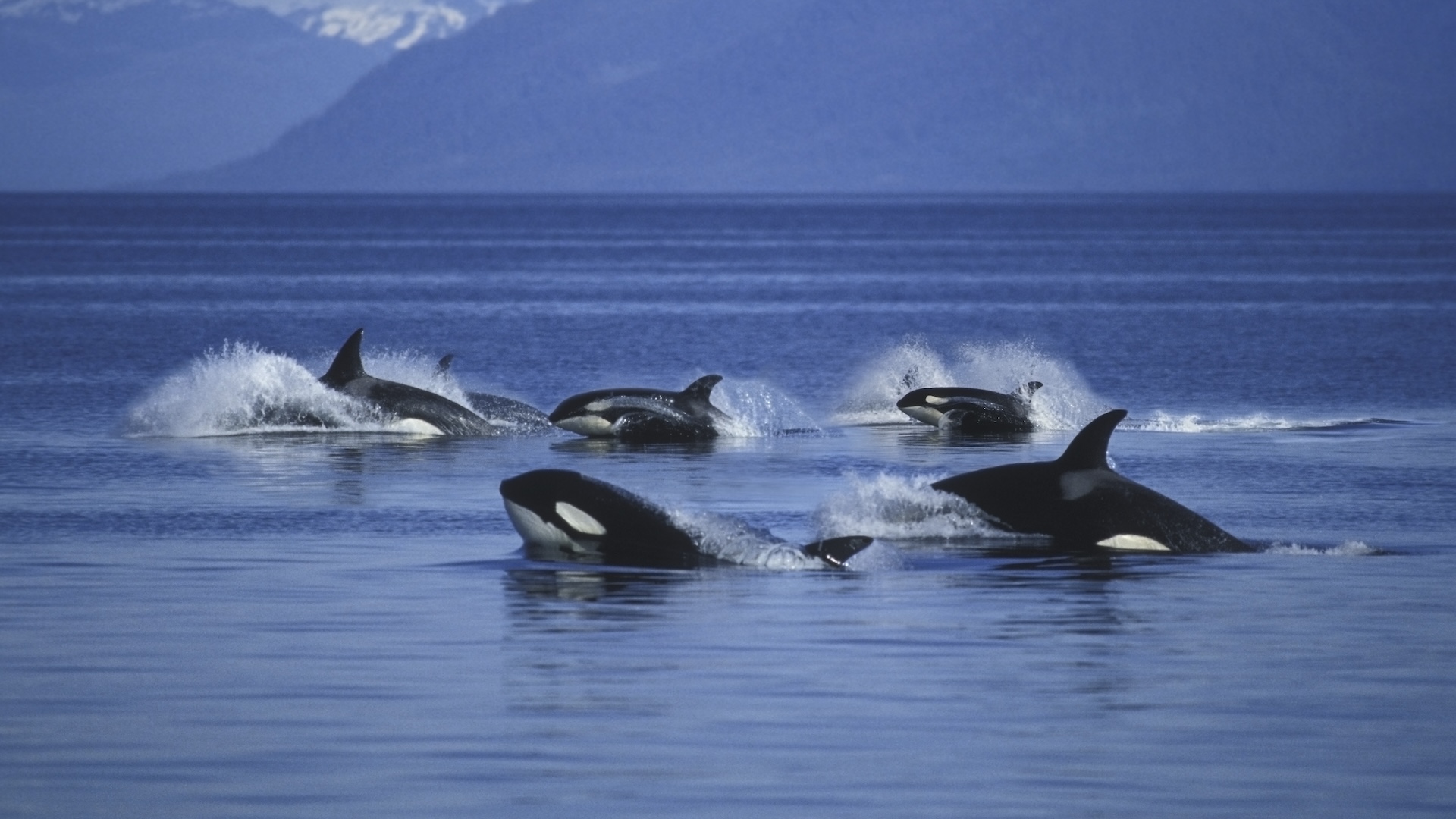
Orcas live in social groups called pods.
Orca quiz: Will you sink or swim?
Further reading
Learn more about how endangered killer whales are on the IUCN Red List, get an overview of orcas from NOAA Fisheries, and see how you can help save this beautiful species from extinction at the Center for Whale Research.
Discover more about orcas
- 11 ways orcas show their terrifying intelligence
- How often do orcas attack humans?
- 'An enormous mass of flesh armed with teeth': How orcas gained their 'killer' reputation
Get the world’s most fascinating discoveries delivered straight to your inbox.

Marilyn Perkins is the content manager at Live Science. She is a science writer and illustrator based in Los Angeles, California. She received her master’s degree in science writing from Johns Hopkins and her bachelor's degree in neuroscience from Pomona College. Her work has been featured in publications including New Scientist, the Johns Hopkins Bloomberg School of Public Health magazine and Penn Today, and she was the recipient of the 2024 National Association of Science Writers Excellence in Institutional Writing Award, short-form category.
You must confirm your public display name before commenting
Please logout and then login again, you will then be prompted to enter your display name.
 Live Science Plus
Live Science Plus





